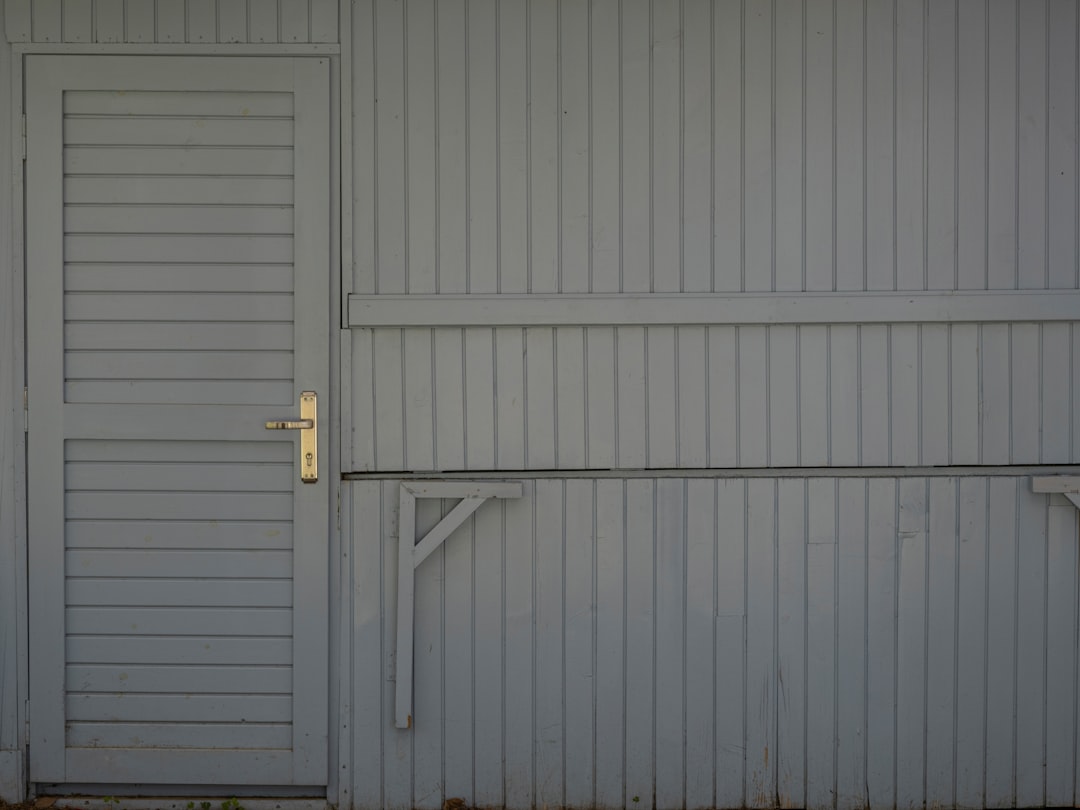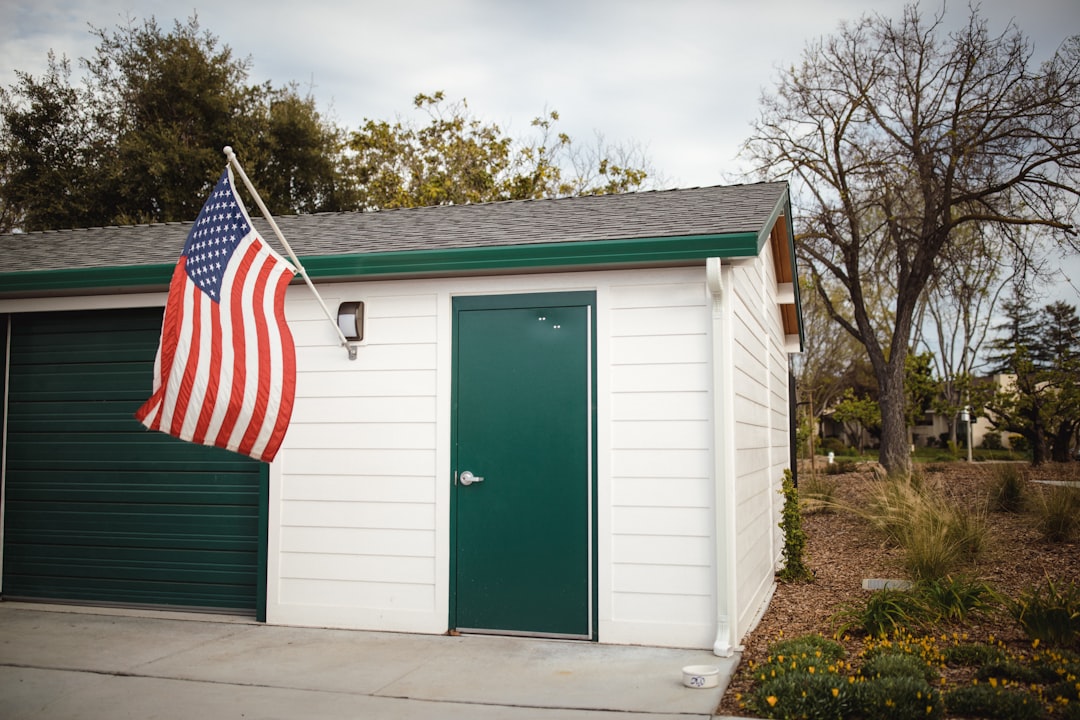

Engage prospects with a scan and streamline customer engagement with FREE QR code marketing tools by Sona – no strings attached!
Create a Free QR CodeFree consultation

No commitment

Engage prospects with a scan and streamline customer engagement with FREE QR code marketing tools by Sona – no strings attached!
Create a Free QR CodeFree consultation

No commitment
Garage door repair services operate in a highly competitive market where customer trust, rapid response, and frictionless service delivery are critical for long-term success. Challenges like missed high-value prospects and limited visibility into genuine customer intent have long hampered companies relying on traditional marketing methods, such as door hangers, print ads, or analog appointment logs. This disconnect often leads to lost opportunities and makes it tough for service companies to maximize both technician efficiency and marketing ROI.
As the industry increasingly embraces data-driven tactics, there is immense potential to bridge offline and online touchpoints, optimize lead capture, and ensure every interaction counts. QR codes in marketing have become a strategic asset in garage door repair marketing, turning everyday physical interactions like flyers, branded service vehicles, and invoices into gateways for digital engagement. Customers can be routed in real time from a door hanger to an emergency repair scheduler or leave immediate feedback after a technician visit, all with a single scan. Every scan generates valuable data that helps marketers proactively identify and pursue leads that might otherwise remain anonymous.
By embedding QR code campaigns throughout the customer journey, garage door repair services can widen the top of the funnel, reduce lag in capturing lead information, and enrich customer profiles for more effective targeting. The guide below shows how QR code solutions help overcome persistent industry challenges such as missed hand-raisers and slow follow-up, turning every scan into a meaningful step toward revenue and customer loyalty.

In the garage door repair industry, missing out on high-value prospects is a consequence of processes that rely on chance encounters and static print material. Too often, interested clients never get tracked, and that initial interest stalls out before it reaches your CRM. Paper appointment cards get misplaced, door hangers sit on porches without a clear call to action, and technicians often leave jobs without capturing reviews or upsell opportunities.
QR codes fix these broken links by letting customers act in the moment of intent. Instead of asking someone to type a URL or keep a brochure, one scan can route them to scheduling, quotes, reviews, or troubleshooting. When those scans are tracked and synced to a CRM, you replace guesswork with real-time signals that guide staffing, routing, and marketing investments.
By incorporating QR codes at tangible customer touchpoints, garage door companies reduce friction, capture leads before they disappear, and align both field technicians and marketers with real-time demand. The result is a smoother, more measurable customer journey from first scan to finished repair.

Sales cycles in garage door repair are short, and speed is often the deciding factor in winning a job. Businesses frequently miss leads because anonymous walk-ups or drive-by prospects have no easy way to signal their intent. Customers with garage door issues are often in a hurry, and any friction in reaching you gives competitors an opening.
QR codes matter because they make action immediate, trackable, and adaptable across all your physical touchpoints. Whether a homeowner sees your truck, receives your postcard, or meets a technician, one scan can bridge the gap from interest to outcome. That simple habit creates a flow of measurable engagement data that traditional print alone cannot deliver.
For example, QR codes on direct mail can promote seasonal tune-ups and route scanners to a limited-time scheduling page. Appointment cards with QR codes can guide customers to warranty registration or review submission. Each scan closes the loop from offline interest to digital conversion while capturing first-party data.
Garage door repair companies often struggle to keep prospects engaged after initial interest, especially when contact information is not proactively captured. Different QR code formats let businesses match context and reduce conversion barriers, so you are not forcing every customer down the same path.
Dynamic codes add an extra layer of power because you can change destinations without reprinting. You can test whether a three-step scheduling flow beats a one-page form or swap a seasonal special without new materials. With a platform like Sona QR, you can manage all formats in one dashboard and track performance by code, channel, and asset.

Growth is limited by the inability to capture in-market prospects at the moment of need. Many interactions like a glance at a work truck or a quick pass by a storefront go unattributed and unmeasured. QR codes shine wherever there is attention and intent but not an obvious next step.
Use QR codes to convert real-world presence into measurable digital actions. Think like a customer under time pressure and build simple paths that require no typing, searching, or waiting. The goal is to intercept demand the second it appears and route it to the fastest next step.
By mapping QR code placements to high-visibility, high-intent locations, you will capture more qualified leads and measure which assets actually move the needle.

Missing and failing to nurture promising leads, especially those who do not fill out forms, poses a major revenue risk. QR codes offer practical, repeatable solutions across common scenarios in the garage door repair journey. Each use case below converts anonymous offline interactions into owned digital signals that you can track, segment, and act on.
Each scenario moves prospects from anonymous interaction to captured, segmented leads. In doing so, it strengthens retargeting, improves technician productivity, and increases both immediate and lifetime value.
Many garage door repair businesses struggle to prioritize retargeting due to fragmented lead data, often limited to people who completed a full online form. That means promising prospects who scanned but did not convert may be lost. QR codes change this by creating a structured way to collect and categorize intent signals at scale.
By deploying multiple QR codes across your marketing mix and mapping each to a clear purpose, you can automatically segment audiences based on what they want and where they engaged. Scans become a stream of first-party data that powers relevant follow-ups through email, SMS, and paid media.
For garage door services, practical segments might include emergency repair seekers, seasonal tune-up shoppers, new homeowners, property managers, and warranty registrants. With Sona QR, each code can carry metadata like campaign, technician, asset type, and location so you can move from generic follow-ups to highly targeted outreach that respects context and intent.
Disjointed marketing efforts and unclear attribution prevent businesses from understanding which channels drive the most ROI. Garage door repair teams often invest in many touchpoints without a connected view of performance, which makes budget allocation difficult. QR codes help unify your channels by turning every physical asset into a trackable entry point to your digital experience.
Think of QR codes as connectors that make cross-channel engagement measurable. When scans flow into a centralized platform, you can see the cumulative effects of door hangers, truck decals, local TV spots, and neighborhood sponsorships on your pipeline. You can then shift spend to the messages and placements that consistently produce leads.
Centralized platforms like Sona QR make it simple to manage codes, monitor scan activity across channels, and sync data with your CRM. The net effect is a connected offline-to-online funnel where every scan carries context that informs your next move.
Momentum comes from launching focused, testable QR campaigns that tie directly to business outcomes. The steps below will help you move from idea to impact while maintaining measurement discipline and operational alignment.
Start with one high-impact use case and expand. You do not need to overhaul everything at once. When you prove that a single QR-enabled touchpoint increases bookings or reviews, it becomes much easier to roll out codes across your fleet, marketing materials, and service workflows.
Identify a pain point, whether it is missed emergency leads, low review rates, or lack of educational touchpoints for DIY customers. Target the stages where lead drop-off or delayed outreach occurs, such as after a technician leaves or when a door hanger is ignored.
Choose between static and dynamic codes based on your need for flexibility and data. Static codes suit unchanging destinations like a PDF maintenance guide. Dynamic codes are better for campaigns that require edits, testing, or detailed analytics.
Your design should make scanning obvious and worthwhile. Frame the code with a benefit-driven CTA and keep contrast high for reliable scanning in bright sun or dim garages.
Place codes where conversion usually lags or anonymity is highest such as job-site signage, trucks, invoices, or packaging for new installations. Match the destination to the medium and the moment.
Measurement turns experiments into growth. Monitor scans by channel, location, and time, then connect those scans to bookings, revenue, and reviews so you can double down on what works.
When you complete one cycle of this checklist, standardize what worked and roll it out to more assets and routes. Small, repeatable wins compound into a durable advantage.

Connecting customer actions like scanning a flyer or submitting a request to real revenue is difficult but crucial. Attribution often ends long before conversion or re-engagement, which turns promising channels into black boxes. QR codes solve part of this puzzle by capturing intent at the source and tying it to downstream outcomes inside your CRM.
To turn scans into decisions, you need both granular data and clean integrations. This lets you see not just that a scan occurred but whether it led to a booking, payment, review, or repeat job. Over time, you will learn which assets deliver the best customers and how to allocate spend accordingly.
Treat analytics not as vanity metrics but as sales triggers and optimization inputs. The combination of QR codes, a centralized platform like Sona QR, and CRM integration gives you the instrumentation to scale what works and retire what does not.
Scaling your success with QR codes comes down to disciplined tracking, relevant destination experiences, and field team enablement. Once the basics are in place, small improvements in design, placement, and workflow automation can produce outsized gains.
Focus on the media and moments that define your business. For garage door repair, these include trucks on the road, door hangers in neighborhoods, invoices at the point of service, and packaging or manuals that remain in the home. Make each asset a doorway to a purposeful next step.
With these best practices, garage door services can move beyond traditional obstacles and ensure every scan translates into measurable value. Start creating QR codes for free, then expand as you learn.
QR codes are more than a passing trend. They are a proven catalyst for scalable growth in garage door repair. For an industry long challenged by offline-to-online blind spots, missed leads, and connecting marketing to actual revenue, QR code strategies offer a clear path to excellence. Every scan helps you find, engage, and convert high-fit prospects before competitors can react. With the right plan and tools, garage door repair businesses can tie offline actions to pipeline, respond faster, and deliver the seamless experience customers expect.
Modernizing your garage door repair business with QR codes is about solving core challenges around lead visibility, attribution, and timely engagement. By integrating QR codes throughout your marketing and operations, you empower technicians with instant customer insight, give marketing access to valuable campaign data, and offer homeowners effortless ways to connect, book, and review. With Sona QR managing codes and scan data, and Sona.com connecting engagement to revenue, you have a practical system for capturing every high-intent opportunity and fueling sustainable growth in a competitive market.
QR codes have revolutionized the garage door repair services industry by transforming how technicians access critical information and interact with customers. From streamlining service calls to providing instant access to repair manuals and warranty details, QR codes enhance technician efficiency and elevate the customer experience. Imagine your technicians arriving fully prepared for every job, reducing downtime and increasing first-visit fix rates—all while customers feel confident and informed throughout the process.
With Sona QR, you can create dynamic, trackable QR codes that update instantly without the need to reprint, enabling you to deliver real-time information and capture valuable data on each scan. This means better resource allocation, faster problem resolution, and measurable insights into service performance. Start for free with Sona QR today and empower your garage door repair services team to work smarter, serve better, and grow faster.
Use data-driven tactics like embedding QR codes on physical assets such as door hangers, service vehicles, and invoices to bridge offline and online engagement, enabling real-time scheduling, feedback, and lead capture.
Generate leads by placing QR codes in high-visibility locations like service vehicles, door hangers, direct mail, and shop windows that link to mobile booking forms, quote requests, and emergency schedulers to capture customer intent quickly.
Encourage customers to leave reviews using QR codes on invoices and technician badges that direct them to preferred review sites, helping improve visibility in local search results such as the Google local 3-pack.
Add QR codes to unique places like technician badges, magnets inside garages, door labels, and packaging to provide instant access to scheduling, DIY repair guides, referral offers, and maintenance plans.
Use QR codes to create frictionless customer engagement by enabling instant scheduling, review submissions, emergency bookings, and access to repair guides, while tracking scan data to optimize marketing and operational decisions.
Use Sona QR's trackable codes to improve customer acquisition and engagement today.
Create Your FREE Trackable QR Code in SecondsJoin results-focused teams combining Sona Platform automation with advanced Google Ads strategies to scale lead generation

Connect your existing CRM

Free Account Enrichment

No setup fees
No commitment required

Free consultation

Get a custom Google Ads roadmap for your business






Launch campaigns that generate qualified leads in 30 days or less.
